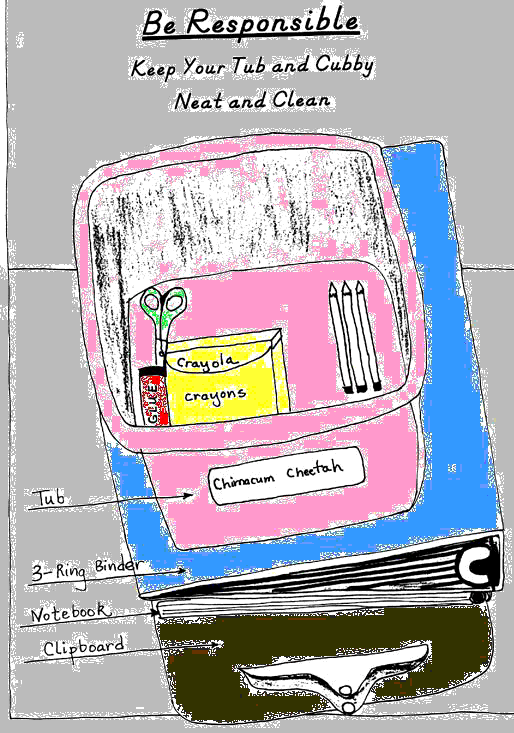Classroom Layout
Russell Yates
When I team taught in a 2nd/3rd grade multiage classroom, it consisted of two rooms that had a folding wall installed between them. The folding section was about 10 feet wide and allowed us to move freely between the “North Side” and the “South Side” of our classroom. It also allowed us to separate our room into two equal parts for when we needed to have instruction by the “half class.” It gave us even more flexibility in grouping and was a godsend when we had to separate the class for standardized testing.
Flexibility was the key. We constantly had students rearranging themselves in various groups throughout the day (green group, blue group, math groups, reading circles, spelling buddies, etc.). Because of this we found that tables worked the best with students keeping their supplies in their cubbies. We also had various areas that were designed for certain activities. The best examples of this were the whole group meeting area (north side), the reading area (north side), and the computer/reference area (south side).
When I stopped team-teaching, I set up my 3rd/4th/5th room similar to the way it was, to best support the flexibility needed for a variety of groupings. Because everything needed to fit into one room (half the space as before), I had to condense and eliminate some sections (I no longer had a separate reading area or group meeting area for instance). However, I was able to get a little more bookshelf space. Another benefit I was able to get for my students was added computers. As our school’s computers were updated, many teachers no longer wanted their older Macintosh computers. I “adopted” some of them and networked them to an older printer. I had the students use them mainly for word processing and keyboarding practice.
After moving to an independent school in which all classes were multiaged, I found that the same systems and structures I had set up in the previous classroom still worked, I just didn’t need as many tables, cubby spaces, or computers (now changed to wireless laptops) due to the smaller class sizes.
Map my old multiage classroom
Map of the north side of my team-taught multiage classroom
Map of the south side of my team-taught multiage classroom






